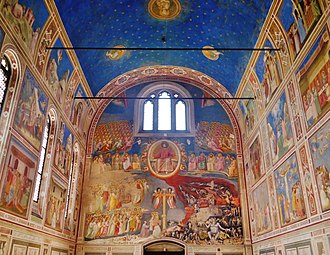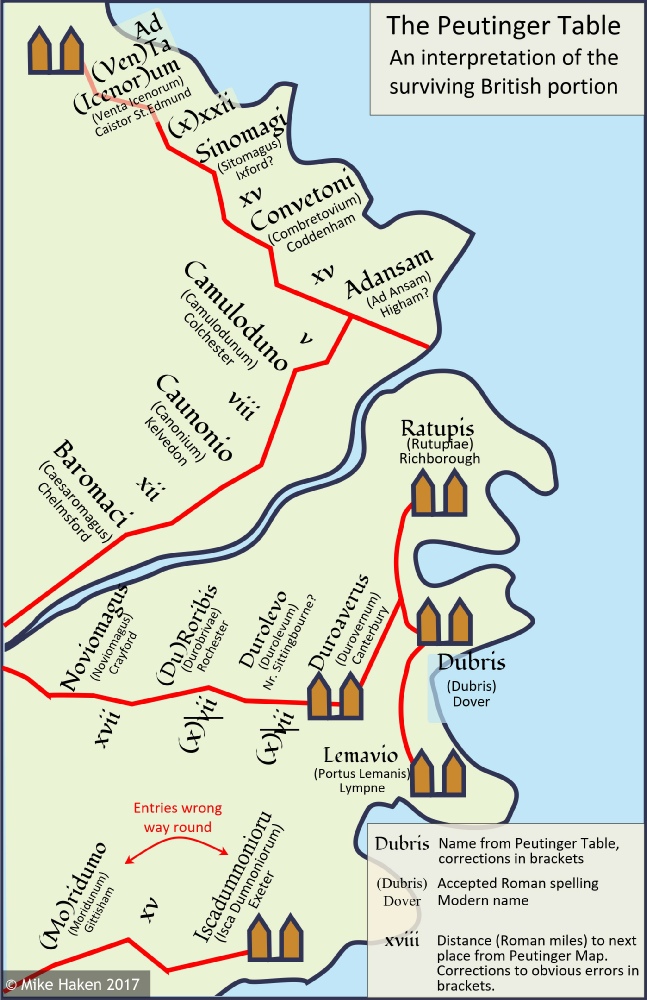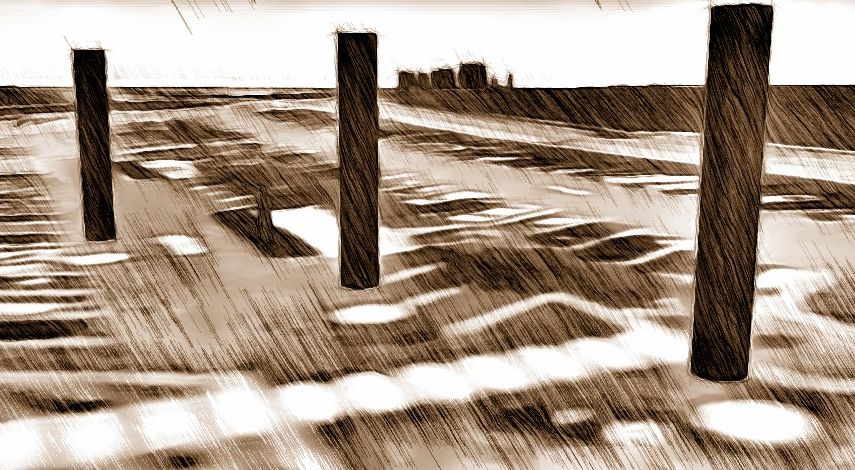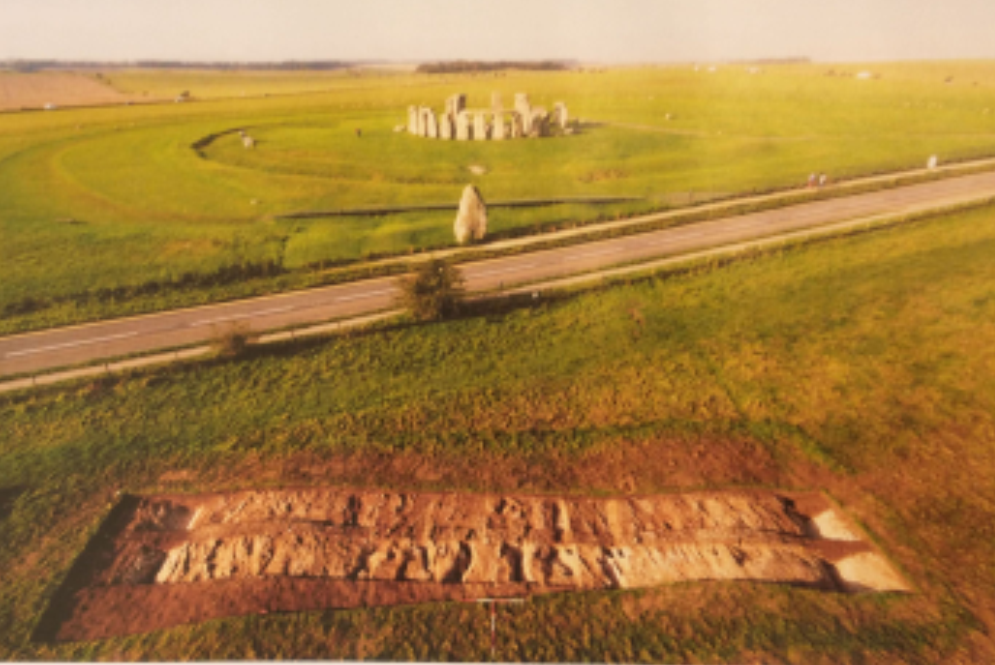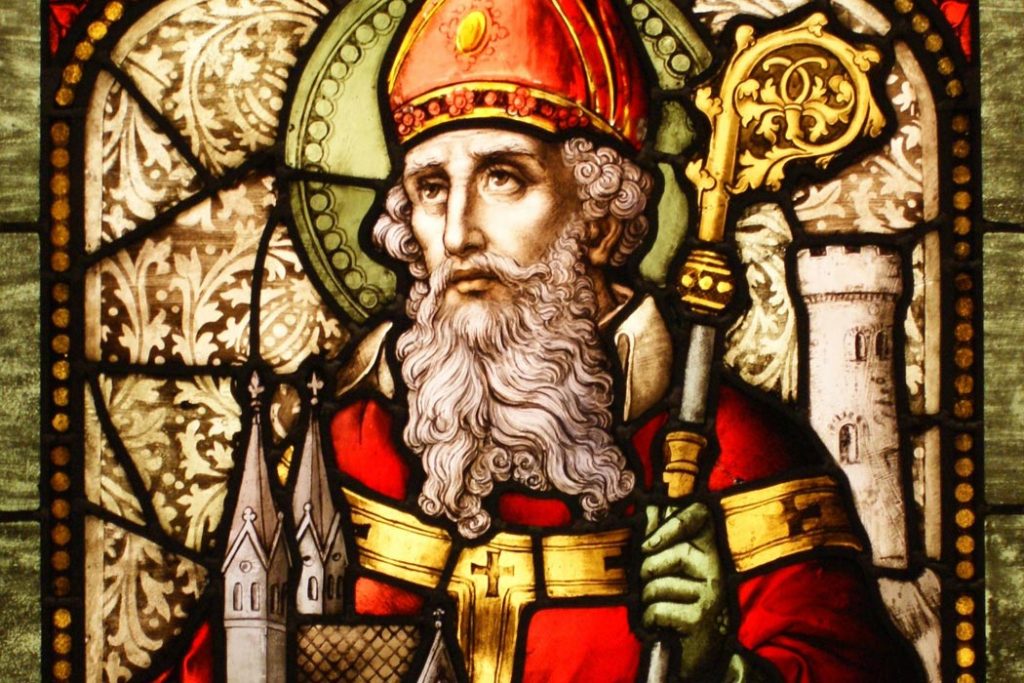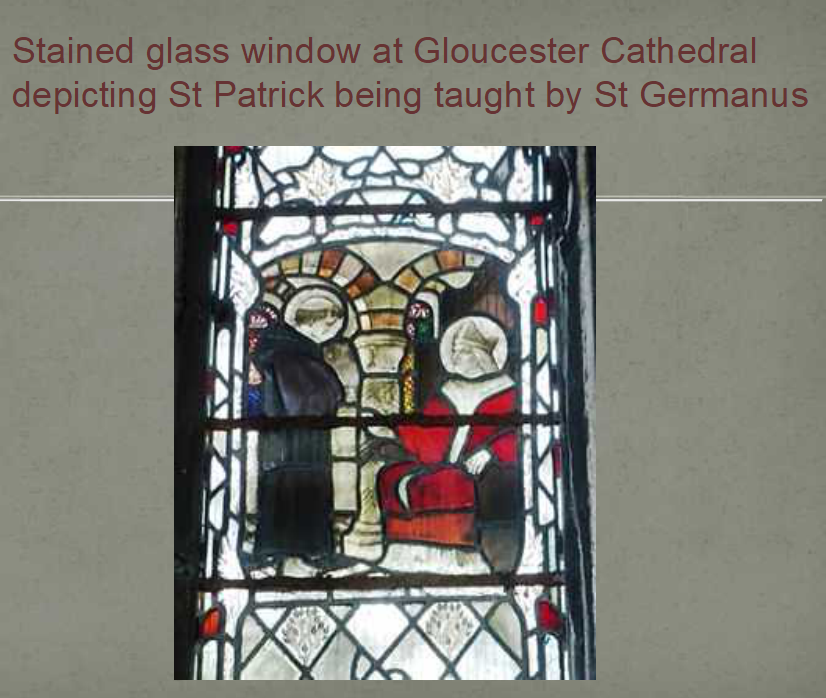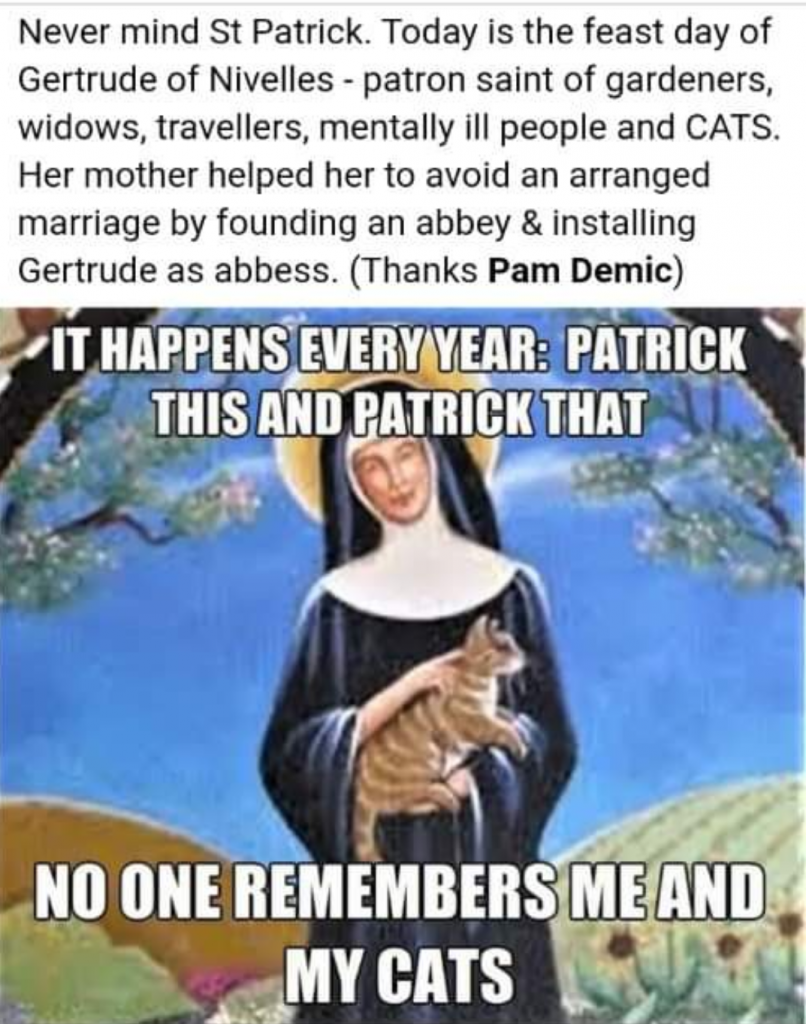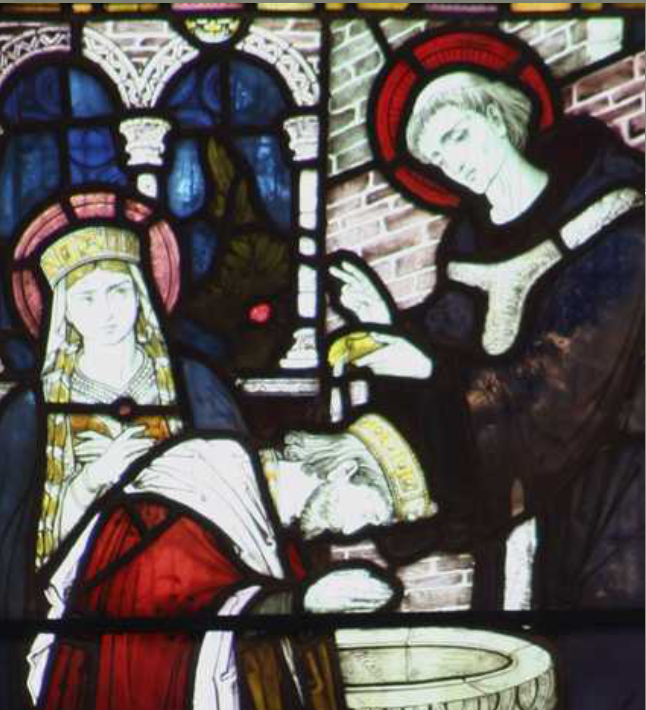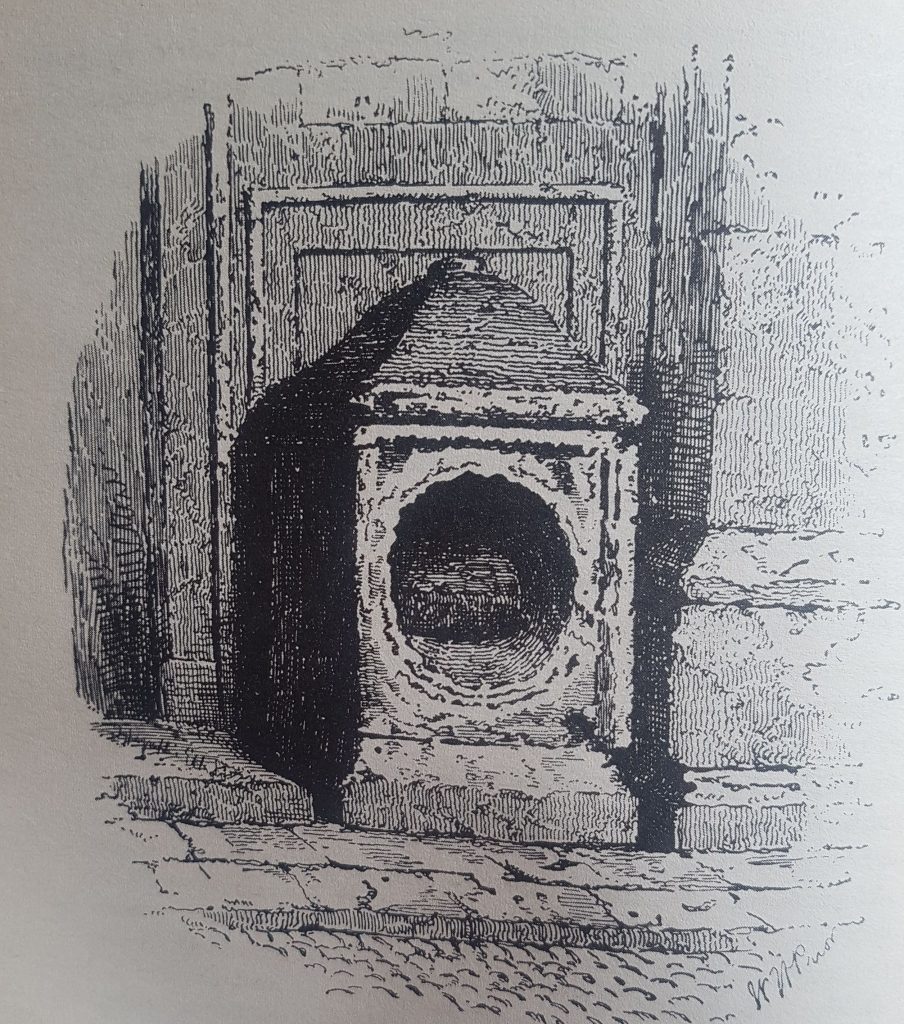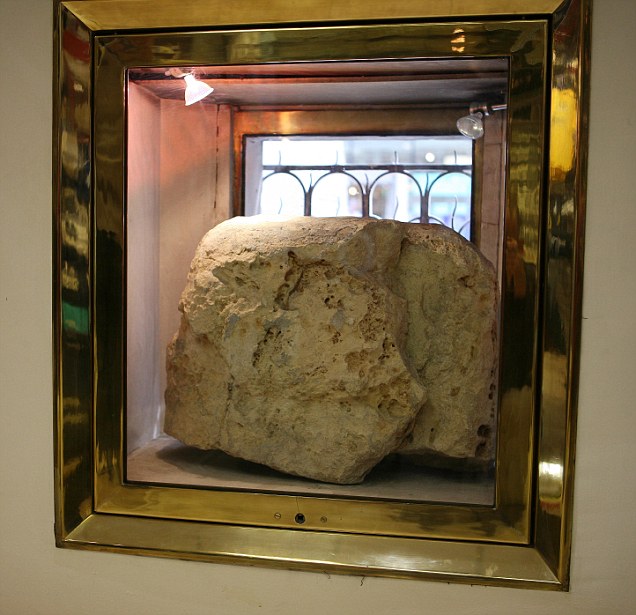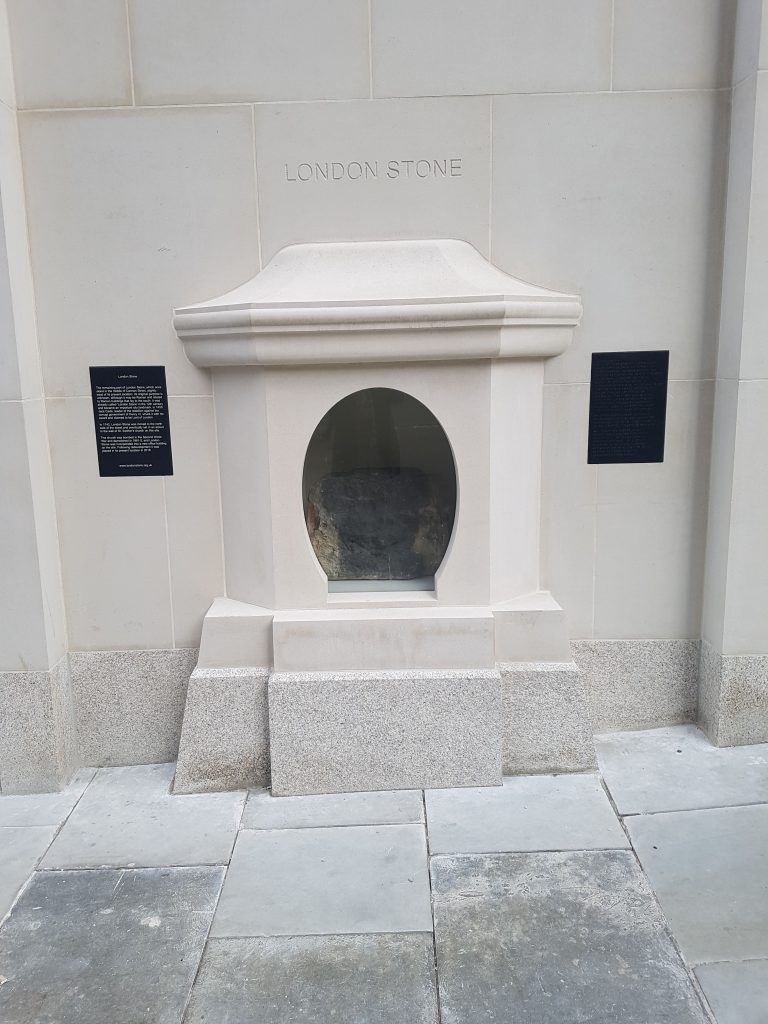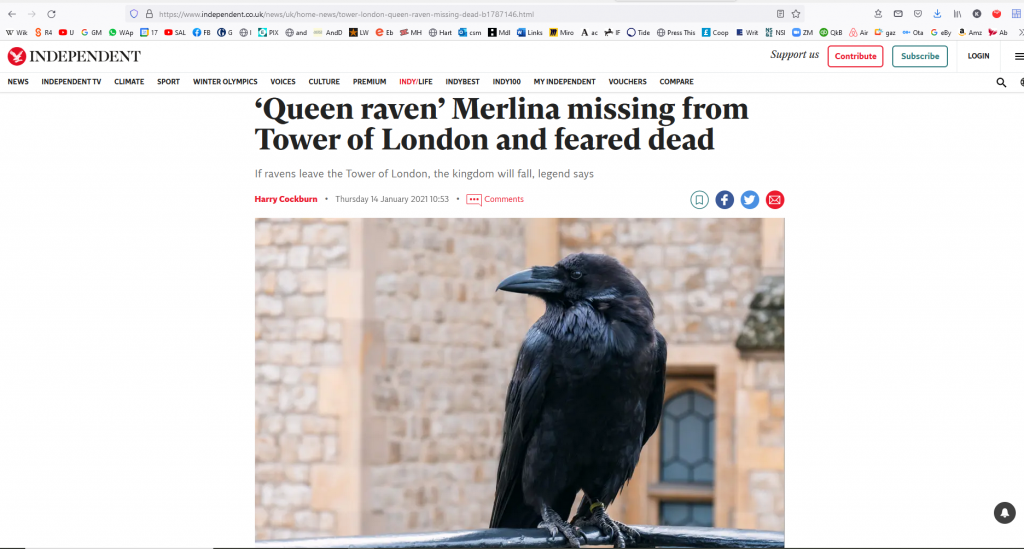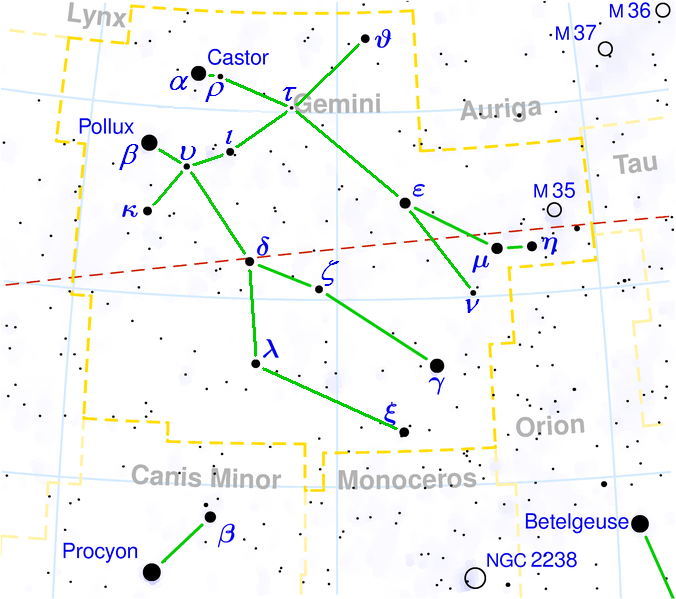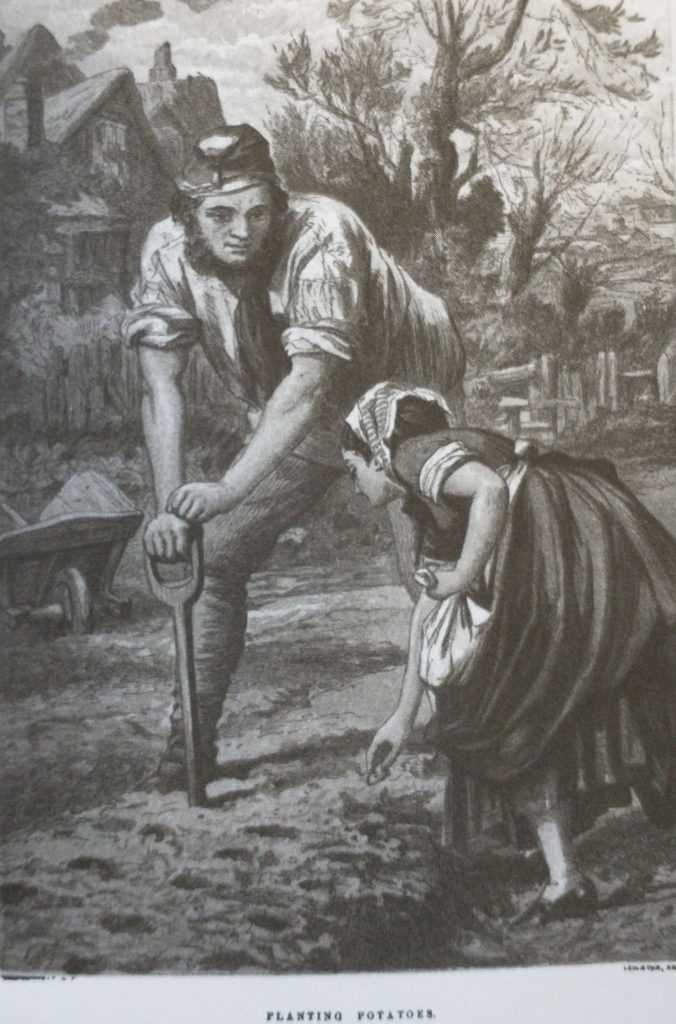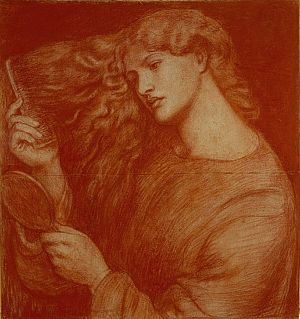
March 25th is the Annunciation—the day that the Archangel Gabriel tells Mary she is pregnant. (to see some very fine paintings of this meeting, look at my other March 25th post here)
March 25th is also the anniversary of the birth of Adam and Eve (and presumably Lilith); the death of Jesus Christ; the anniversary of the Immolation of Isaac; the Parting of the Red Sea; the Fall of Lucifer; and, (until 1752 in the UK) the beginning of the Year.
Of course, it isn’t or to put it another way, no one can, or ever could, prove any of these dates except the last one. So what they speak to is the way the Church saw the world as logically structured by God. Christian thinking about the year, the world, the universe, creation, developed over many years and took influences from many cultures. It is also very complicated to work out the sequence, so I’m going to summarise from what I know (or at least what I think I know).
Christians chose Christmas Day as the Birthdate of Jesus probably because it was a prominent birthday already shared with several Gods, but particularly Mithras and Saturn. It was approximately at Solstice, the beginning of the Solar Year, and close to one of the main festivals of the Roman World, the Saturnalia. December 25th might have been chosen by the pagan religions because it is the time when the Sun begins to rise, to the naked eye, further north each day, lengthening the day, increasing light and the promise of warmer weather.
So, Jesus was born on/or around the Solstice, so he must have been conceived approx. 9 months earlier, which would be around the Spring Equinox. I have always thought that the 4 or 5 days difference between the Solstice, the Equinox and the Christian festivals was down to the fact that the Calendars were not well coordinated with the actual movements of the Sun (because the Sun does not circle the earth in 365 days, or in 365 and a quarter days, but 365 days, 6 hours, 9 minutes which makes Calendars hard to align with the Sun). But I have just realised the importance of something I discovered yesterday when preparing my two posts on March 25th. And since writing that sentence I have had another revelation. But be patient.
So, God sends his Son to save the human race. God is a logical being, so she would send the Son at an appropriate time. If the Child is born at or near the Solstice, which is an appropriate time for the Son of the Creator, then 9 months earlier, March 25th, is near the Equinox, which is the beginning of Spring. For many people, Spring is a new beginning, for example, the Anglo-Saxons saw Winter as the death of the year, and Spring as the young Year.
So to the Creation. God, having a free choice, would have created the world at the beginning of Spring. In fact, if you think about it, God creates everything necessary for life at the creation in 6 days, and it is going to immediately spring into new life, and the first season must, therefore, be Spring? Right? So March 25th.
This gives a nice symmetry with Jesus’s Life. Conceived on March 25th, born December 25th, and died 30-40 years later, according to the Church, on March 25th. (the only other famous person I know born and died on the same day is William Shakespeare).
Easter, when Jesus is martyred, isn’t March 25th I hear you saying. But remember, Easter is a lunar festival, so its date varies each year. Births and deaths, on the other hand, are fixed to the Solar Calendar and the Church chooses March 25th as the most appropriate day to pin the death of Jesus, on the anniversary of his conception and the anniversary of the creation of the Earth, and I am guessing that this is also the preferred date for the Day of Judgement.
It is also the Birthday of Adam, and his first wife Lilith (or so some say), and Eve. More about Lilith below. I thought this date was just one of the parallels that the Church liked, Jesus and Adam born on the same day but, I have just worked out why Adam is born on March 25th, and why these dates are not the Equinox, March 20th but March 25th, which has been bugging me.
Let’s go back to the Beginning of Creation. According to the Anno Munda‘s arrangement of the Year, the world was created 5500 years plus 2023 years ago so 7523 Before the Present. And it was supposed to have ended in 600AD, 6000 years after the Creation. So, they got that wrong.
The Creation, as described in Genesis, has the following sequence of Seven Days. As the Creation began at the Equinox March 20th. I have added dates to the 6/7 day sequence of Creation:
- Day 1: Light – March 20th
- Day 2: Atmosphere / Firmament – March 21st
- Day 3: Dry ground & plants – March 22nd
- Day 4: Sun, moon & stars – March 23rd
- Day 5: Birds & sea creatures – March 24th
- Day 6: Land animals & humans – March 25th
- Day 7: The Sabbath of rest – March 26th
- For more information www.bibleinfo.com
So there you have it! Adam, Lilith, and Eve were created on Day 6 with the Land Animals – March 25th. Jesus conceived, also on this date, and so 9 months later is born on December 25th. It all makes sense, and aligns the Christian year fully with the Solar Year.
And that, dear Reader, is the very first time anyone has been able to explain to me why Christmas is not at the Solstice, and why the Annunciation was not at the Equinox. Maybe you all know this, but it is very exciting to work this out for myself. And believe me, I have done a lot of reading about calendars and not spotted an explanation.
So that was yesterday’s revelation. What about the revelation I had about 45 minutes ago? (now about 5 hours). When writing items like this, there are numerous things that are interconnected, and I begin writing them before realising I am interrupting the story I am trying to tell. This is often to the detriment of the story arc, or to understanding (although often, I think, adds to the joy of this blog – after all ChatGBT couldn’t write this stuff – could it?).
So I began to write about Dionysius Exiguus and his invention of the AD/BC system and about eras, cycles, and ages. (He replaced the Anno Mundo year with the AD/BC system in the 6th Century AD).
I was thinking about the beginning of the year. The Celts chose October 31st, Julius Caesar chose January 1st, other cultures have other dates, and the Spring Equinox is another choice sometimes made. The Church and Dionysius Exiguus choose March 25th, although secular society also recognised the claims of January 1st. Britain kept to March 25th until 1752 when we adopted the Gregorian Calendar. But people like Samuel Pepys celebrated New Year’s Eve on 31st December. So January 1st was the New Year, but the year number did not change until March 25th. So King Charles I thought his head was being cut off on January 30th 1648; while history books will tell you it was cut off on January 30th 1649. Same day, different reckonings.
December 31st/January 1st is essentially a Solstice New Year Festival. And I have, previously, used the difficulty of keeping calendars as to why these days has slipped out of alignment with the Solstice. But, today I realised that it is as likely that the reason is the Solar/Lunar nature of our time keeping. The year, and its festivals, is largely arranged around the Solar Cycle. But our weekly and monthly cycles are derived from the Moon. So, I think that January 1st (or the Kalends of January as the Romans would have called it) would originally have been the First New Moon after the Winter Solstice. Keeping the Moon months and the Sun years in sync is very, very difficult, and so Roman and Christian cultures gave up and fixed the moon months, completely abandoning any attempt to keep the months to the actual lunar cycle. This is our current system, in which only Easter remains a true to the moon festival, much to our perennial confusion.
Maybe you all know this, but I’ve learnt a lot in writing these two posts.
Lilith
The April 2023 Issue of ‘History Today’ has a short piece called ‘The Liberation of Lilith’ which suggests that the story of Lilith, a figure from Jewish Folklore, is first attested in a Medieval satirical text called ‘The Alphabet of Ben Sira’. The story goes that Lilith is created using the same clay as Adam. Adam then demands she lies below him during sex. She refuses, saying that they are both made from the same stuff and, therefore, equal. Adam refuses to accept this, and so Lilith leaves the Garden of Eden. So the story goes.
The story of Lilith, Sarah Clegg suggests, is one of a series of similar stories found around Europe and Asia. And Clegg assumes that it is gradually modified to make Lilith a demon who will kill babies unless the names of three angels are spoken out loud. So, the story survives as a charm to keep babies safe, and perhaps to remind people of equality among the sexes. But this causes problems for, OK, let’s call them out, the Patriarchy. Lilith cannot be equal to Adam so she becomes a monster, not made from the same clay as Adam but from the scum and waste left over from Adam’s creation. I imagine the story then went on to propose that God creates Eve from Adam’s rib, and so she is created from Adam, and is, therefore nor equal, but subservient to him. Lilith is now a significant figure in feminist folklore circles.
I wrote about more about eras and ages in my post which you can see her: Greater Cycles and the Six or Seven Ages
Attached to the watercolour of Lilith by Rossetti (at the top of the page), was a label with a verse from Goethe‘s Faust as translated by Shelley. (Wikipedia)
“Beware of her fair hair, for she excells
All women in the magic of her locks,
And when she twines them round a young man’s neck
she will not ever set him free again.”
The model is Fanny Cornforth, Rossetti’s mistress. He painted another version a few years later, but the model in that is Alexa Wilding. His models are arguably more interesting than the man himself and include: Elizabeth Siddall, Jane Morris and Fanny Cornforth. Christina Rossetti, his poet sister, modelled for Rossetti’s painting, Ecce Ancilla Domini which you can see here.
I think I might have enough material to begin my own Cult.
For more on the Annunciation, look at my other March 25th post here.


